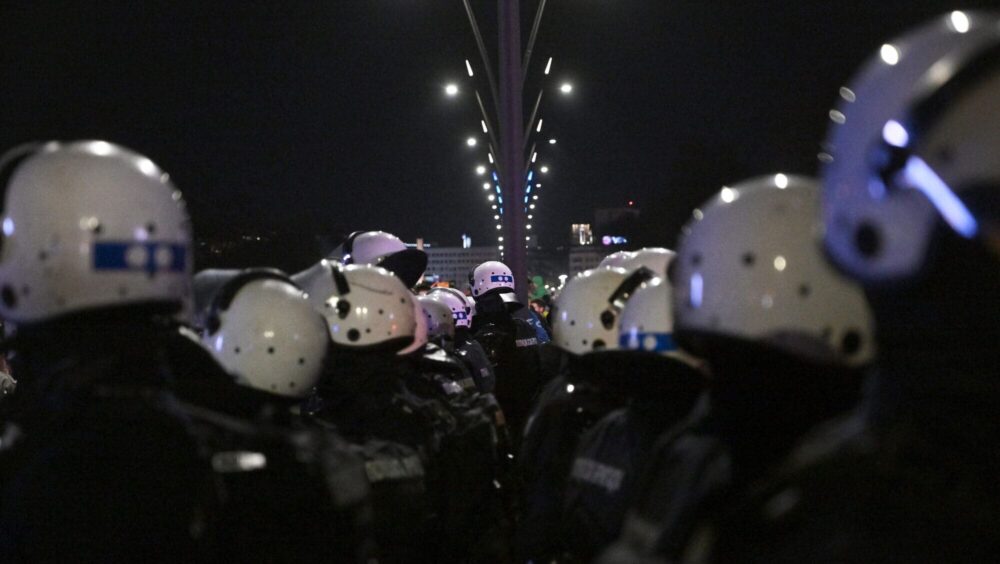
Serbian police in riot gear block a bridge during an anti-government demonstration in Belgrade
OLIVER BUNIC / str / AFP
Serbia is preparing for one of its biggest protests in decades as demonstrators descend on its capital, Belgrade on Saturday, March 15th.
The country’s president, Aleksandar Vučić has warned that the anti-government protesters could resort to violence, while outgoing Prime Minister Miloš Vučević said the participants of the rally want to initiate the “blockade” of Belgrade for 72 hours.
In preparation for the demonstrations on Saturday, which are scheduled to take place in front of the parliament, authorities said the building will be locked for the next three days for security reasons.
Meanwhile, pro-Vučić counter-protesters are gathering in front of the presidential palace.
Protests in the EU candidate country have been ongoing for more than four months. They erupted following the November collapse of a train station roof in the northern city of Novi Sad, which killed fifteen people.
Anti-government voters believe the accident is symptomatic of the corruption and nepotism they associate with the ruling Serbian Progressive Party (SNS) which has been in power since 2012.
The station building was renovated twice in recent years in a deal with Chinese state companies, and critics believe that the sloppy reconstruction work may have resulted from corruption.
The tragedy led to the resignation of Transport and Infrastructure Minister Goran Vesić, and prosecutors filed charges against thirteen people over the collapse, including Vesić and several state officials. The charges against Vesić were dropped just a week after his arrest, which caused widespread outrage and the escalation of the student-led protests into a country-wide anti-government movement.
Vesić and twelve others were then indicted and detained again in late December, but it wasn’t enough to contain anti-government sentiments.
President Aleksandar Vučić reshuffled his government in January in an attempt to appease the protesters, and agreed to all of their demands, including the full disclosure of documents related to the deadly accident, the impartial investigation and prosecution of all those responsible, the release of all detained protesters, and increasing public funding for higher education.
These steps have clearly not eased the growing tension in the country.
Earlier this week, protesters barred access to the offices of state broadcasters, keeping employees out and forcing some live programming off the air. The opposition has got in on the act, too: last week, some of their MPs caused havoc by tossing smoke grenades and tear gas inside the parliament.
Nationalist Vučić has described the protests as a Western-orchestrated ploy to oust him from power.
The prime minister of neighbouring Hungary, Viktor Orbán, has said that “globalist-liberal forces” are attempting to destabilise a sovereign nation, and warned that these same forces are pursuing Slovakia and Hungary, too, nations where sovereigntist forces are in power.
